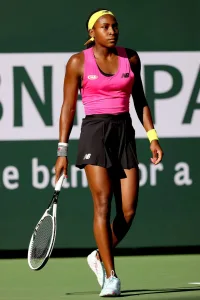Tennis Faces Scrutiny as Content Chokehold Risks Wasting Stars Like Coco Gauff and Carlos Alcaraz

Professional tennis is at a crossroads, facing growing criticism over how it controls and restricts access to its content. As digital engagement becomes increasingly vital for global sports, tennis continues to lag behind, putting the spotlight on how this strategy could be stifling the growth and reach of its brightest young stars—Coco Gauff and Carlos Alcaraz among them. While these athletes have the charisma, talent, and global appeal to draw in new generations of fans, the sport’s outdated content policies may be holding them back from reaching their full potential off the court.
In an era where short-form video platforms and social media trends shape public attention spans and brand growth, tennis remains overly protective of its footage and highlights. Unlike the NBA, which actively encourages the sharing of its content across TikTok, Instagram, and YouTube, tennis maintains a tight grip on its broadcasting rights. This limited accessibility hinders viral moments from gaining traction, preventing casual fans from discovering the energy and excitement of the sport.
Coco Gauff, one of the most electrifying players to emerge in recent years, is a prime example. Her US Open victory brought her significant attention, but compared to stars in other sports, her digital presence doesn’t fully reflect her influence. Similarly, Carlos Alcaraz, with his explosive athleticism and compelling on-court demeanor, is built for the spotlight that thrives on digital platforms. Yet, the slow and rigid media model in tennis makes it difficult for their iconic moments to circulate freely, dampening potential fan engagement and sponsorship opportunities.
The current model may benefit traditional broadcasters, but it alienates younger audiences who consume sports differently. Modern fans want instant access to highlights, behind-the-scenes clips, and compelling narratives. By denying that demand, tennis risks becoming culturally irrelevant, especially when competitors like soccer, basketball, and even Formula 1 are rapidly expanding their online presence and capturing the attention of the youth.
Marketing experts have warned that unless tennis adapts, it may continue to waste opportunities to amplify its most marketable stars. The lack of a unified media strategy across the ATP, WTA, and Grand Slam tournaments also makes it harder for fans to follow the sport seamlessly. Instead of building momentum around players’ stories and achievements, the current system often dilutes them, causing tennis to miss out on the kind of crossover stardom enjoyed by athletes like LeBron James or Serena Williams at her peak.
To thrive in a digital-first world, tennis must loosen its grip on content and embrace a more open, shareable media model. Doing so would not only benefit the sport’s visibility but also empower stars like Gauff and Alcaraz to become global icons beyond the tennis court. Without change, tennis risks allowing its most exciting talents to slip into the shadows, their potential muted by an outdated system reluctant to evolve.







